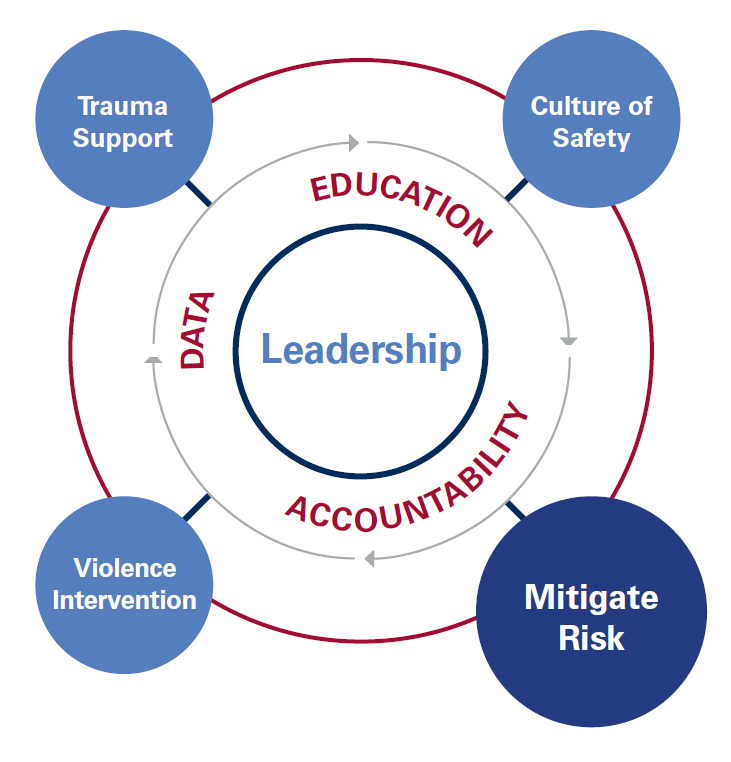

Building a Safe Workplace and Community: Mitigating the Risk of Violence
The American Hospital Association’s Hospitals Against Violence (HAV) initiative hosted the American Society for Health Care Risk Management (ASHRM) for a facilitated dialogue to explore challenges and current strategies to mitigate the risk of violence. The discussion fostered an exchange of ideas and solutions that informed this issue brief and accompanying case studies.
Introduction
In 2021, HAV developed the Building a Safe Workplace and Community framework to guide health care leaders in their efforts to prevent and mitigate violence. This issue brief examines risk mitigation and marks the first in a series that expand on each domain of the framework: culture of safety, violence intervention, trauma support and risk mitigation.
This issue brief is an outgrowth of a series of discussions between hospital and risk management leaders. The brief shares considerations when assessing potential risks, strategies to mitigating violence and insights on making the care environment safer.

Definitions to Know
Workplace Violence
According to:
- Occupational Safety and Health Administration (OSHA): Workplace violence is any act or threat of physical violence, harassment, intimidation, or other threatening disruptive behavior that occurs at the work site. It can affect and involve workers, clients, customers and visitors.
- CDC’s National Institute for Occupational Safety and Health: Violent acts (including physical assaults and threats of assaults) directed toward persons at work or on duty. Examples of violence include threats, which are expressions of intent to cause harm, including verbal threats, threatening body language and written threats.
- The Joint Commission: An act or threat occurring at the workplace that can include any of the following: verbal, nonverbal, written, or physical aggression; threatening, intimidating, harassing, or humiliating words or actions; bullying; sabotage; sexual harassment; physical assaults; or other behaviors of concern involving staff, licensed practitioners, patients, or visitors.
Risk Assessment (RA)
A part of the overarching process of risk management that identifies, analyzes and evaluates risks that may have a negative influence on the health care organizations’ quality and safety of care delivered.
Threat Assessment
A behavior-based inquiry process that helps organizations respond to a threat of targeted violence and identify those who may be moving toward an intentional harmful event; it is a multi-disciplinary approach to identifying, assessing, and mitigating concerns of intentional violence.

